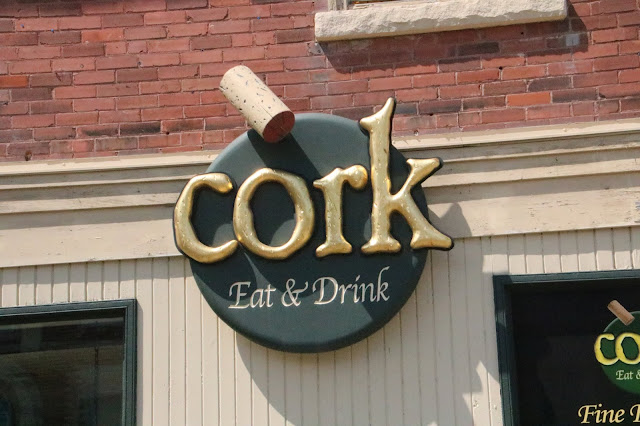After two days in Stratford it was time to head home the long way.
First stop Millbank, population 600.
After cheese this is the next stop one makes in Millbank. Has gluten free baked goods as well.
Wellesley where my jar of apple butter came from. Ruth Abernethy, the sculptor, lives here.
Along the roads items for sale on the honour system.
Street sign in Wellesley.
Anything you want in fresh produce is available but note NO SUNDAY SALES, this is Mennonite country and this is on every sign, even the quilt shops.
Coming into the town of Elora.
Perched on the edge of a spectacular gorge and nestled along the banks of the Grand & Irvine River lies the enchanting village of Elora. It's been years since we were here. The town was packed with tourists.
Elora was founded in 1832 by Captain William Gilkison; a sailor, adventurer and land speculator born in Irvine, Ayrshire, Scotland.
Originally called Irvine Settlement, the village was renamed Elora when the post office was established in 1839. Capt. Gilkison named the community after his brother’s ship, which was itself inspired by the Ellora Caves in India. Elora was settled by mainly Scottish pioneers who left their mark on finely crafted limestone houses, many of which remain today.
Maple Leaf outlines the war memorial.
You do have to wonder!
We cross the street and have a beer and some sweet potato fries on the patio.
These guys were looking out for us.
At the foot of Mill Street stands the Elora Mill, one of the few early Ontario five-storey grist mills still in existence.
Under renovation as a boutique hotel, it was supposed to reopen in 2014, finally reopened this summer but as you can see, still major work being done.
I had thought about staying here for a night but at $650 a night, decided against it!!
The Elora Gorge is one of the most scenic areas in Southern Ontario with its limestone cliffs descending 80 feet into the Grand and Irvine rivers where small caves, rapids, falls and quiet waters beckon visitors.
Andrew Carnegie, a highly influential philanthropist and businessman, dedicated much of his life and self-made fortune to educational causes.
His strongest philanthropic initiative, driven by his strong belief in and passion for free education, was the creation of 2,509 free public libraries around the world. In total, he spent $2,556,600 on the construction of 111 libraries in Ontario and another 14 elsewhere in Canada. These funds contributed significantly to the development of literacy in small communities across this province. Elora Branch (Wellington County Public Library)
Received grant on March 23, 1909
Received $6,400 from the Carnegie Foundation
W.F.Sheppard, architect
The Elora post office was built at the same time and very similar to the post office in nearby Fergus . The Romanesque style buildings were constructed of local sandstone, rather than the red brick typical of the standard Canadian Federal Post Offices of the time. They both opened in January 1912.
























































...what a neat area, 'no Sunday sales,' I know this well.
ReplyDeletethe murals are pretty cool and I love that house on the corner, a corner house, looks almost like a dollhouse
ReplyDeleteWow! What a wonderful series of photos of your delightful weekend travels!
ReplyDeleteHappy Day to you,
A ShutterBug Explores,
aka (A Creative Harbor)
It really is a marvelous town. I do recommend a trip up to Fergus. Checking online, their Highland Games are coming up in a few days, from the 10th-12th.
ReplyDelete